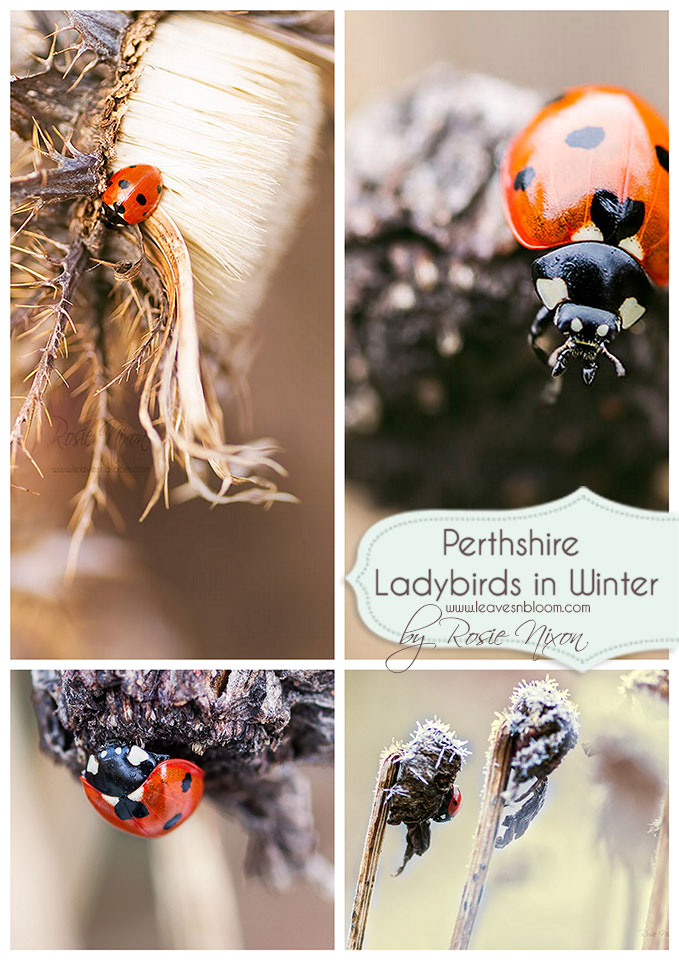
The story of the 7 Spot Ladybird in Winter ...a Scottish one!
It's the 21st January. Snow blankets the garden like a thick white woollen shroud.
The thermometer reads -6.8°C and daylight has finally arrived. It's time to layer up and get out into the winter garden. With every step you take there's a distinct crunch.
The air feels thick, raw and piercing. Moreover it chills to your very bones. You inhale and the lining of your nose starts to sting. You exhale and your breathe lingers in the air like fog.
Brrrrh ...what I am doing outside at 8 am with a camera?
Natural Ladybird Antifreeze
On my last blog post If you were a ladybird where would you spend the winter? I shared how I quite by accident found this little ladybird in the garden.
I thought it was in diapause (a period of dormancy in an insect especially during unfavourable environmental conditions.) but after observing it for days I discovered that it was much more active than I first realised.
Who would have thought that a 7 spot ladybird in winter would be active? I certainly didn't!
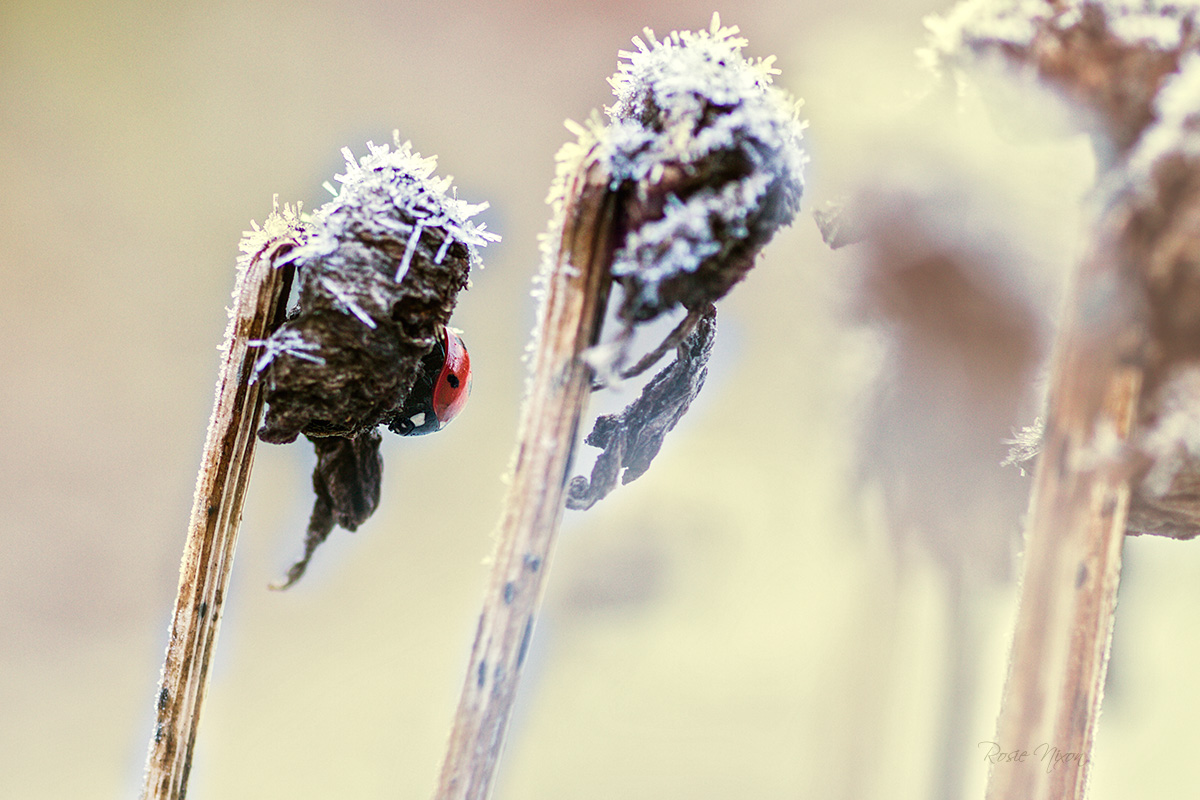
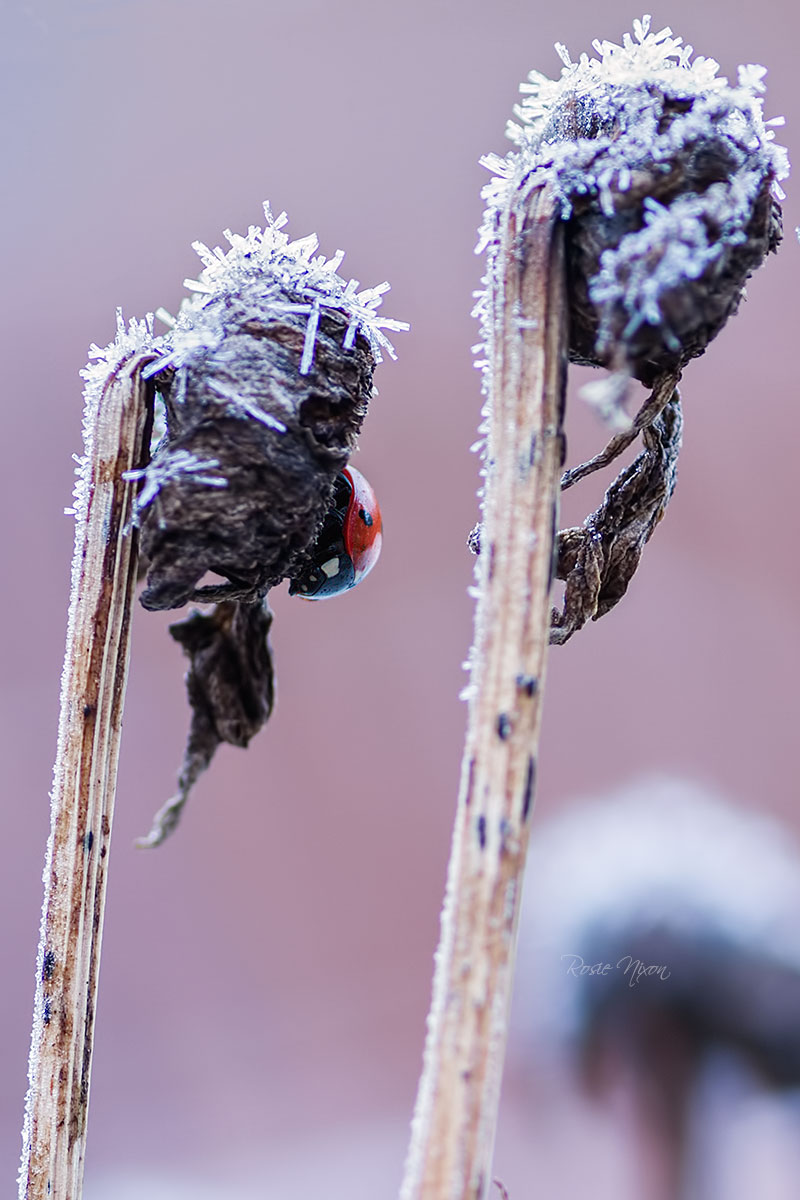
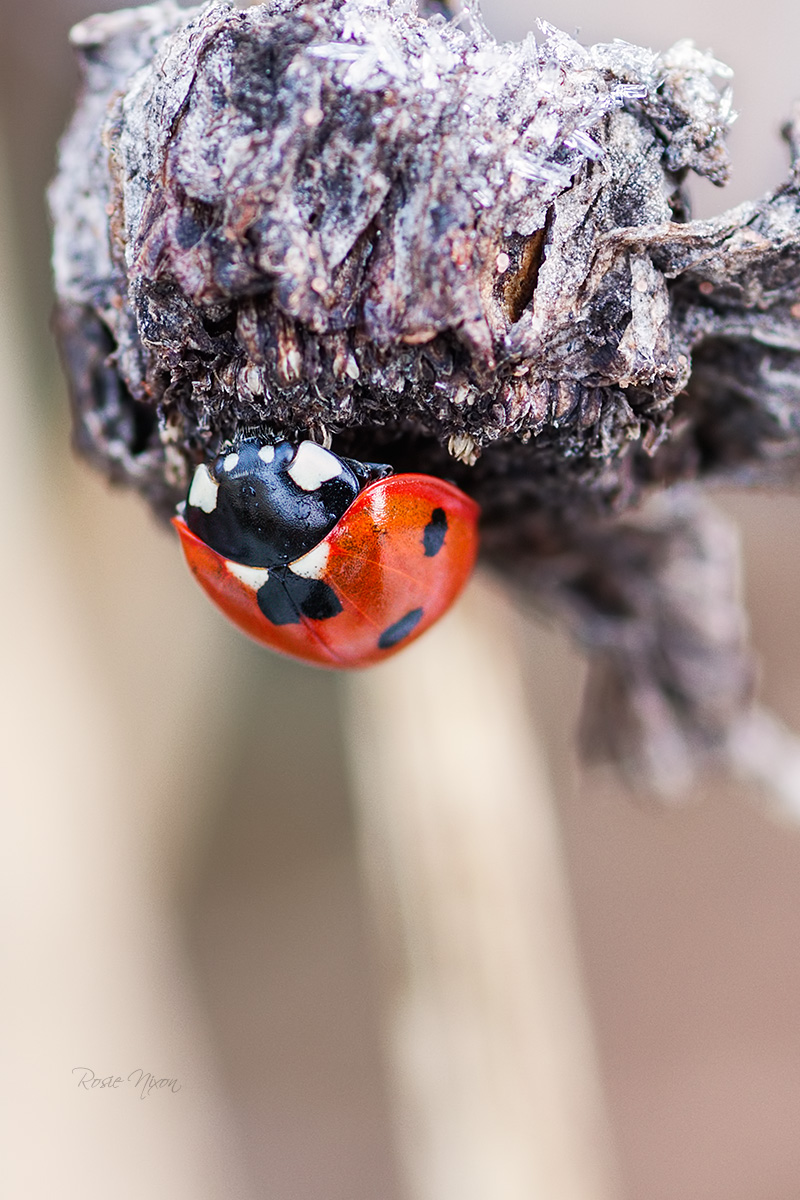
The story of the 7 Spot ladybird in winter continues ...
Oh no was it going to fly off before I got a chance to photograph it once again?

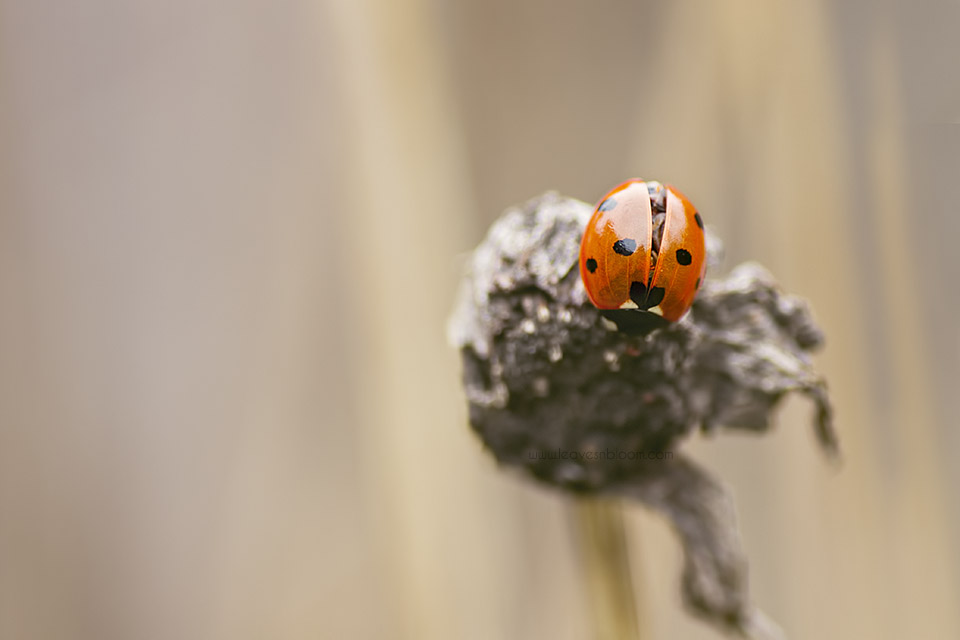
The next day it had gone. Hopefully it flew to somewhere much warmer in the garden!
Another Survivor
In the meantime I've found another 7 spot ladybird. This time in the front garden and on a plant that has been used before as a ladybird winter home as I recorded here in 2012 - 1st Phenology Report of the Year. This one comes out when it's sunny and by evening it tucks itself back into the Carlina acaulis thistle seed head. Just as well as this week the temperature has dipped down to -7°C /19.4°F overnight in the garden.
Don't you think that bugs can be fascinating to observe? I appreciate the 'little things' in life much more as I get older!

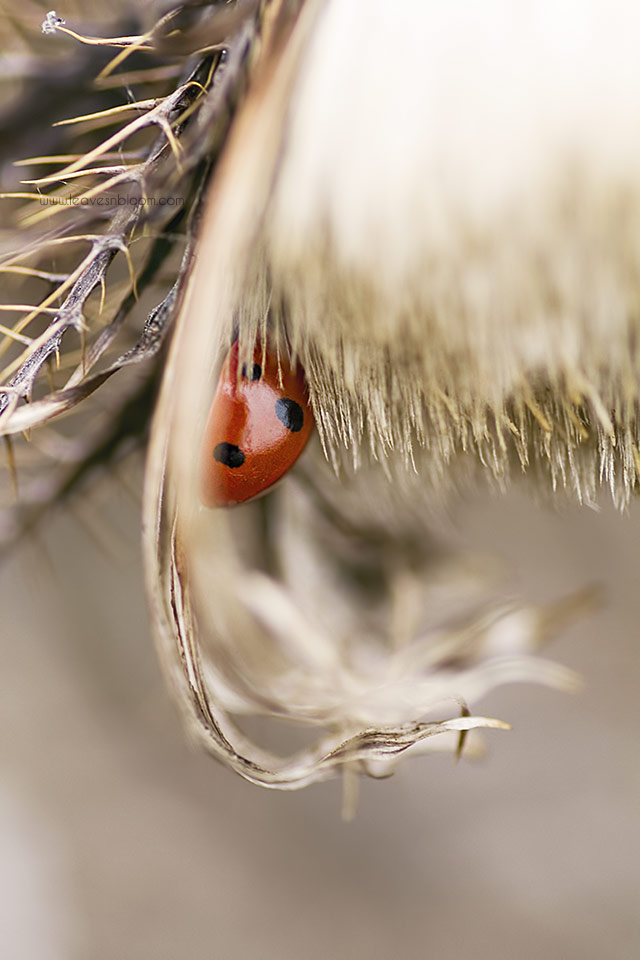


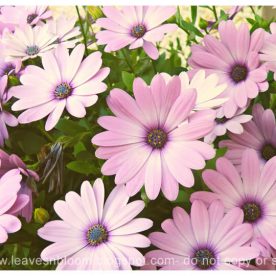
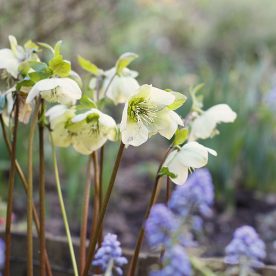
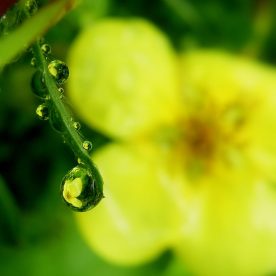
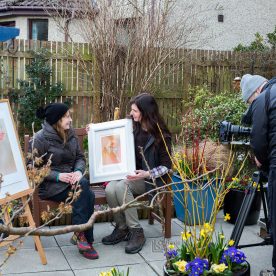
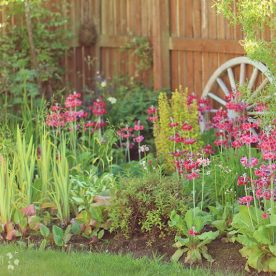
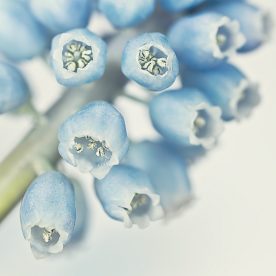
Mark and Gaz
Very fascinating, good to know it's doing well despite the cold temperatures 🙂
Marianne
Yes… Bugs are absolutely fascinating! Thanks so much for sharing your little Lady Beetle 🙂
Angie
It's good to appreciate the little things in life. Great photography Rosie. I hope they continue to hang around in your garden.
rusty duck
It really is amazing how anything so tiny can survive these low temperatures. I feel the same about the smaller birds. Yet somehow they manage it.
myaberdeengarden
Lovely photos. I am so jealous as we hardly ever see ladybirds. I have even left a couple of patches of nettles at the back of my border just for them. Clearly the cold isn't the reason, I wonder if something is eating them?
Millymollymandy
Hi Rosie – some more wonderful ladybird photos and how lucky you are to have some bugs to watch in winter. Great that you can observe and learn more about their behaviour this way. That last one has found a really nice fluffy place to overwinter! 🙂